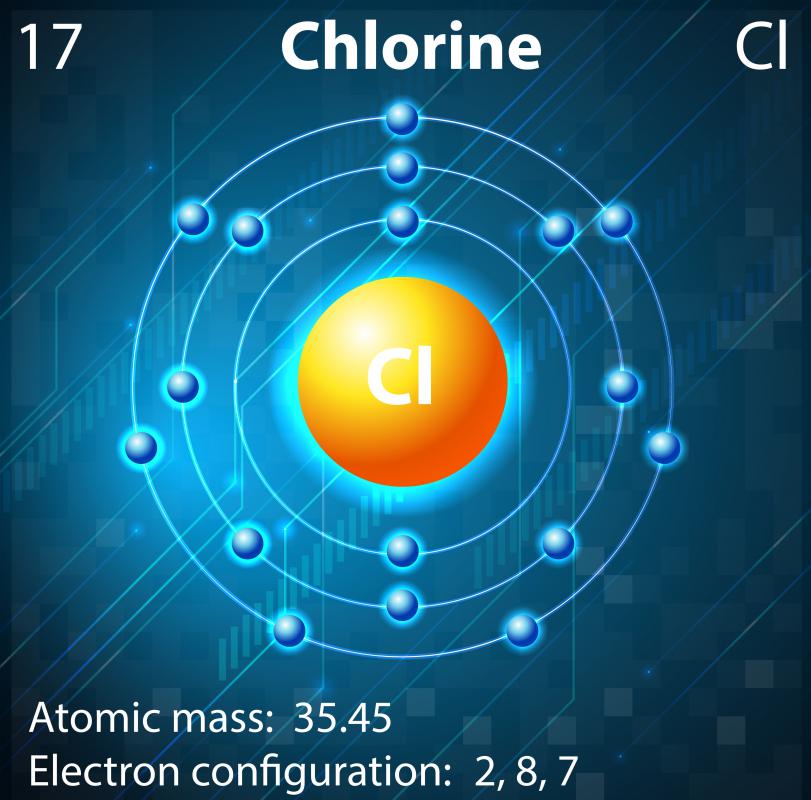At WiseGEEK, we're committed to delivering accurate, trustworthy information. Our expert-authored content is rigorously fact-checked and sourced from credible authorities. Discover how we uphold the highest standards in providing you with reliable knowledge.
What are Polychlorinated Biphenyls?
Polychlorinated biphenyls, also known in more casual conversation as PCBs, are a group of chemical compounds that were once widely used in industrial manufacturing. The compounds are natural to the extent that they are usually byproducts of tar burning or other related processes, but scientists also found ways to produce them in bulk quantities artificially, which is the format in which they have been most popular in the past. They were frequently used in things like industrial cooling fluids and stabilizers for power transformers, as well as in certain paints and sealants. In the mid-1970s, scholars began questioning their safety, and tests have largely proved that these compounds can be very harmful to humans and animals alike. They have been banned from use in most parts of the world, but still persist in the environment in many places.
Basic Composition

Structurally, PCBs are a diverse group of compounds. The basic structure is a pair of benzene rings, which are comprised of a circle of six carbon atoms with hydrogen atoms attached. The rings have double bonds, and each ring has one or more chlorine atoms. The number of chlorine atoms per ring can range from one to ten, leading to 209 possible different compounds. As a group they have the chemical formula C12H10-xClx.
How and Why They Were Used

There have been a couple of notable uses for these compounds over the years, but they have traditionally been most popular in the manufacturing of things like electrical transformers and industrial cooling systems. Adding the chemical to cooling and insulating fluids helped keep them stable and made them more efficient.
The chemical also has a number of adhesive properties, and as a result it was a common addition to paints, caulking products, and plasticized coverings for things like appliances and structures exposed to the outside elements. Most uses were industrial, but some things like waterproof coatings and floor finishes sold for home use also contained high levels of the compound.
International Ban

Modern researchers today generally agree that this class of chemicals, while effective, carries a number of serious risks to human health. As a result, PCBs were outlawed in the United States by an Act of Congress in 1979, and in most other countries by the Stockholm Convention on Persistent Organic Pollutants, an international rule-making body, in 2001. These bans basically outlawed the continued production and sale of the chemicals; they did not generally have any effect on appliances or products already in use. As such, there are still PCB-containing fluids and coatings at play in households and businesses. Consequently, people doing repairs or renovations on older structures often have to be specially trained in how to deal with the chemical in case they come into contact with it.
Effects of Exposure
Most people are exposed only to low doses of PCBs, which the human body is generally capable of breaking down. These toxins are, however, cumulative. This means they do build up in the body over time.

The effects of exposure to large amounts of the compound in any of its forms can be quite profound. Acute toxicity can manifest as severe skin disorders. Animals that are exposed can develop liver cancer, and polychlorinated biphenyls are considered to be likely carcinogens in people, too. These substances have been shown to cause developmental problems in babies that have been exposed to them. The thyroid gland and immune system can also be impacted by PCBs.
Role of Bioaccumulation

The effects of polychlorinated biphenyls are partly due to their ability to undergo bioaccumulation. When attached to sediment in water, they are usually eaten by small animals and fish. This can increase the concentration of polychlorinated biphenyl in these creatures. Any other organism that then eats the contaminated fish is subjected to a much higher dose of the chemical. People that eat a lot of fish from contaminated waters can be exposed in this way.
Persistence in the Environment
Despite the bans on new production, these compounds still find their way into the environment. This most often happens as a result of chemical leaks or fires; inappropriately dumped industrial waste can also cause contamination. Some consumer products that contain polychlorinated biphenyls can also leach the chemical if they are disposed of in landfills that are not designed to deal with hazardous waste. Incineration can also be a contributing cause.
Their general resistance to degradation means that PCBs can remain in the environment for long periods of time, and are known as persistent organic pollutants. The chemical properties can vary, usually depending on the number and location of these chlorine atoms. In general, the more chlorine atoms the compound has, the more resistant it is to breaking down.
PCBs can be found in the air, soil, and water, and have been found even in remote areas like the Arctic. Polychlorinated biphenyl molecules with few chlorine atoms are light and often found in the air. Molecules with more chlorine atoms are typically heavier, and more likely to be toxic and carcinogenic. These weighty compounds are frequently found in sediment in water.
AS FEATURED ON:
AS FEATURED ON:















Discuss this Article
Post your comments